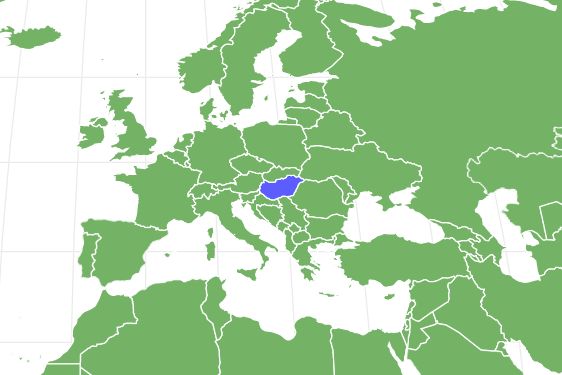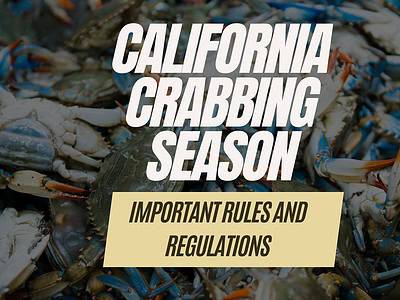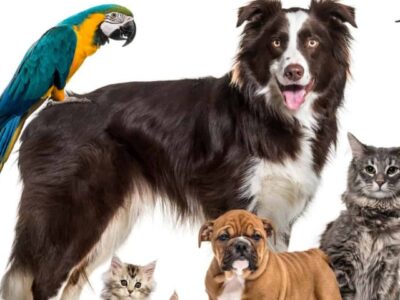Advertisement
Wirehaired Vizsla Scientific Classification
- Kingdom
- Animalia
- Phylum
- Chordata
- Class
- Mammalia
- Order
- Carnivora
- Family
- Canidae
- Genus
- Canis
- Scientific Name
- Canis lupus
Read our Complete Guide to Classification of Animals.
Wirehaired Vizsla Conservation Status
Wirehaired Vizsla Facts
View all of the Wirehaired Vizsla images!
“Most breeding records on wirehaired vizslas were lost in World War II, so no one knows for sure which genetics were involved in their creation.”
The wirehaired vizsla originated in Hungary in the early 20th century, descending from the puppies of a German wirehaired pointer and a traditional vizsla (Hungarian beagle). Hungarian hunters wanted to create a dog with the determination and versatility of typical beagles but with a sturdier disposition and thicker coat. These traits would make them better suited to northern Europe’s cold weather and harsh terrain.
The wirehaired vizsla is distinguishable from its cousin thanks to its dense, wiry coat and slightly stockier frame. These dogs sport long, shaggy beards and eyebrows, traits that give them a constantly surprised expression. Wirehaired vizslas are expressive, friendly, and highly trainable with an intelligence that’s sure to delight. With enough exercise and mental stimulation, wirehaired vizslas are a loving, kid-friendly addition to any family.
The Best Dog Food for Wirehaired Vizsla
The wirehaired vizsla requires a high-quality diet with adequate animal-sourced protein, healthy fats, minerals, and vitamins to provide sufficient energy levels and the nutrients needed for healthy growth. Consult your veterinarian for specific dietary recommendations, such as allergen-free recipes. Keep in mind your dog may need different formulations for the puppy, adult, and senior stages of his life.
A-Z Animals recommends Taste of the Wild High Prairie Grain-Free Dry Dog Food as a well-crafted doggy diet for your wirehaired vizsla. The recipe contains roasted bison and venison as its primary ingredients, featuring plentiful protein to promote healthy muscle development and function. Vitamins and minerals from real fruits and omega fatty acids help your dog maintain joint mobility and coat health. Finally, this recipe contains dog-friendly probiotics to support good digestion and promote robust immune systems.
Outside of regular dog food, wirehaired vizslas are extremely food-motivated and love earning treats throughout training sessions. However, these dogs can become obese with too much food, so watch their calorie consumption. Clean drinking water should also be available at all times for your pup.
3 Pros and Cons of Owning a Wirehaired Vizsla
| Pros | Cons |
|---|---|
| Smart and easy to train Wirehaired vizslas are eager to please and learn tricks quickly. | Need 2+ hours of exercise These dogs are high-energy and need physical and mental stimulation to stay healthy. |
| Loving and loyal These dogs don’t stray far from their families and love to cuddle | Require clear structure and rules Without firm leadership, these dogs can become guarded and somewhat aggressive. |
| Generally healthy with low medical maintenance There are no common health issues associated with wirehaired vizslas. | Can have separation anxiety These dogs form close bonds with their humans and get stressed when they’re left alone for too long. |
Wirehaired Vizsla Size and Weight
Females reach an average height of 21.5-23 inches, while males stretch approximately two inches taller. Mature male dogs weigh 55-65 pounds, and females measure anywhere between 45 to 55 pounds on average.
| Sex | Size |
|---|---|
| Male | 25’ Tall, 65lbs, fully grown |
| Female | 23’ Tall, 55lbs, fully grown |
Wirehaired Vizsla Common Health Issues
Wirehaired vizsla dogs are generally healthy, with no common health concerns attributed to the breed. Responsible breeders will screen their stock for genetic conditions such as hip and elbow dysplasia, glaucoma, and hyperuricosuria – a susceptibility to kidney stones. Be sure to request such tests from a breeder before meeting and purchasing prospective puppies.
Wirehaired Vizsla Temperament
These pups are expressive and gentle and love to make their owners happy. Wirehaired vizslas are talented and highly intelligent, requiring daily mental stimulation to keep them from becoming stressed or destructive. As hunting dogs, wirehaired vizslas have a strong prey drive, and while they may be good with cats, they should be kept away from rodents or rabbits.
Establishing yourself as the pack leader is essential, as the wirehaired vizsla can start to resource guard if they don’t sense order and clear structure in the house. These high-energy dogs are not well-suited for apartment life and much prefer open spaces with room to run and chase. They can also form strong bonds with their families and become anxious when separated from them for too long.
How to Take Care of Wirehaired Vizsla
Maintenance and Grooming
Despite its coarse, wiry coat, the wirehaired vizsla requires minimal grooming to stay clean and healthy. A wipe down between baths will keep them dirt free, while a grooming mitt used during shedding can minimize the amount of fur they let loose in your home.
Regularly trim your dog’s toenail, if they’re not worn down naturally, to prevent any discomfort during walking or damage to the nail. Instituting a regular teeth-brushing regimen at an early age will help prevent the buildup of tartar and mitigate dental issues as your pup ages.
Training
These lively, energetic dogs are eager to please, but they can become easily bored due to their high intelligence. This can sometimes complicate training as owners must put in the effort to keep training sessions short and engaging. Firm and consistent discipline with a clear set of rules will provide structure for your wirehaired vizsla, making him comfortable in his role in the family. However, never use harsh words or physical punishment, opting instead for positive reinforcement and treats to motivate your pup to learn.
Exercise
Your wirehaired vizsla needs plenty of exercise daily to stay in top shape. Going on adventures with their humans makes them happiest, and these dogs are excellent companions for hiking, jogging, or cycling. Wirehaired vizslas need plenty of space to run freely, ideally in a fenced area. They need to work out their hunting instinct, and space and opportunities to run will help reduce their urge to chase after prey.
Puppies
Mothers usually birth five to 10 puppies per litter. As with most intelligent dogs, early training and socialization will help them discover their place in the world and become comfortable with new experiences. Trainers must show a patient, firm hand with their dogs to establish themselves as the authority figure. Otherwise, your dog may show signs of anxiousness, such as resource guarding and wariness around strangers.
Wirehaired Vizsla and Children
These intelligent, loving dogs get along great with children, especially energetic youngsters who can play for hours and match their energy. They have a natural propensity to protect their family, with whom they’re highly affectionate. Wirehaired vizslas may be too much for young toddlers to handle, but they’re generally very affectionate with children and will bond closely with them, especially if raised together.
Dogs Similar to Wirehaired Vizsla
The Wirehaired Vizsla is closely related to similar hunting beagle dogs, including the German wirehaired pointer, Pudelpointer, and Weimeraner.
- German Wirehaired Pointer: These dogs were bred with vizslas to produce the thicker coats and stockier frames of wirehaired vizslas.
- Pudelpointer: These intelligent dogs are born hunters, just as eager as the vizsla to please their owners.
- Weimeraner: This is another type of hunting dog, though they were intended to hunt larger game such as boar or bears.
Popular Names for Wirehaired Vizsla
Popular names for Wirehaired Vizsla dogs include:
- Rosie
- Flynn
- Duke
- Scout
- Maggie
- Lily
Up Next
View all 108 animals that start with WWirehaired Vizsla FAQs (Frequently Asked Questions)
Are wirehaired vizslas affectionate?
The wirehaired vizsla is typically highly affectionate and welcoming to children and strangers if adequately socialized. The dogs are also high-energy and extremely intelligent, requiring plentiful exercise and mental stimulation to stay happy.
Do wirehaired vizlas shed?
These dogs are moderate shedders, although they let loose some fur during seasonal changes. Routine, occasional brushing will remove dead skin and dirt from their coats.
How much exercise does a wirehaired vizsla need?
These active pups are high-energy and need at least two hours of exercise daily. Wirehaired vizslas prefer open spaces to run where they can chase and play with their owners, though they are also excellent hiking companions.
Thank you for reading! Have some feedback for us? Contact the AZ Animals editorial team.
Sources
- Purina, Available here: https://www.purina.com.au/dogs/breeds/hungarian-wire-haired-vizsla
- American Kennel Club, Available here: https://www.akc.org/dog-breeds/wirehaired-vizsla/
- UK Kennel Club, Available here: https://www.thekennelclub.org.uk/search/breeds-a-to-z/breeds/gundog/hungarian-wirehaired-vizsla/
- Gun Dog Magazine, Available here: https://www.gundogmag.com/editorial/breed-profile-wirehaired-vizsla/175421
- Wirehaired Vizsla Club of America, Available here: https://wvca.club/

















